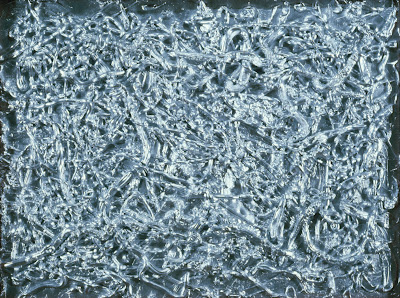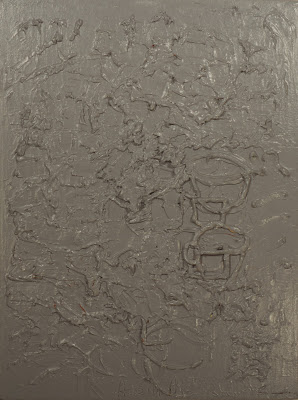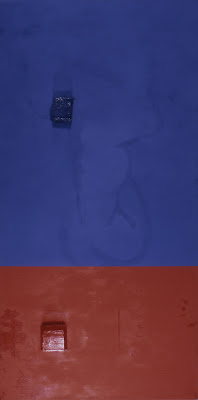2.3.2 How to stretch a canvas
Regardless if the oil painter choses to work on canvas or panel, or never intends to stretch his own canvas, the student of oil painting is obligated to learn how to stretch a canvas. Beyond the obvious lessons, knowing how to stretch a canvas teaches the student of oil painting the limitations and potential of the medium. There are many ways to stretch a canvas. This step by step illustration is the method I have found to consistently produce the best possible painting surface, with the most longevity.
The choice of using staples or tacks to fix the canvas to the stretchers has consistently been debated by artists. Tacks are traditional and painters have used them because tacks were all that was available to them. Today staples are readily available, they are just as good and sometimes better than tacks. Cheap staples or tacks will eventually rust, damaging your canvas and eventually causing mold to form between the stretcher and canvas. If the oil painter choses to use tacks, then he must realize that it is for the nostalgic philosophical reasons and not the structural ones. Todays galvanized staples are every bit as good as tacks, and in most cases, better. Albeit, every oil painter should use tacks at least one time simply to gain the experience of their use. It is not the use of fixing the canvas to a stretcher that holds great importance, so the choice of tacks or staples is freely yours without consequence to your painting surface. It is the method in which the artist actually stretches the canvas which is important.
While fixing a canvas to a stretcher frame, always work around the canvas in a counter-clockwise direction. Working counter-clockwise is a natural pattern, so let that become a part of your muscle memory when stretching canvas. Doing so might seam arbitrary, but it assists the pull and relax of the fabrics weave, so it lays tight and parallel against the stretcher frame in a manner more according to the weave of the fabric.
For what we are going to be doing you will need a few tools: a ruler, scissors, a stapler, staples, hammer, an ink pen or marker, small pliers, and a pair of canvas pliers (if you need them.)
Step One: Build the stretchers making sure all four corners are square.
The decision to use lightweight or heavy weight stretchers is both one of cost and need. For smaller paintings, light weight stretchers are fine, and desirable for works less than 24 inches. Paintings on light-weight stretchers larger than 24 inches tend to warp and “potato chip” during the drying process. Heavy weight stretchers are by far superior and will hold the canvas better. Modern stretchers are made to expand and slightly re-stretch the canvas though time. Once the painting is completed, place the stretcher wedges in by pounding them into the inside corner slots, one at a time in the same order as stapling the corners of the canvas. Do not use a glue to fix the stretcher wedges because they need to be moveable so as to help re-stretch the canvas as its weave settles with time.
Step Two: Let us start with a un-primed canvas.
Right now we only want to line up the weave of the fabric to be as parallel to the stretcher bars as possible. Lay the canvas painting surface down onto a soft surface, like a blanket or sheet, so as to not scratch the surface or cause the pattern of the fabrics weave to be displaced. I use a large quilt to lay my canvas on. You don’t have to go to the extent of protection as I do, I do that because the pre-primed linen I use is very smooth and expensive and I don’t want to ruin my surface for applying oil paint. Place the pre-built stretcher frame on top the back of the canvas then wrap the canvas over the stretchers, aligning the weave of the fabric parallel to the stretcher bars, overlapping the inside edge by an inch. If your canvas is larger than your stretchers need, trim off the excess while sizing.
Once you have the fabric's weave lined up with the frame, staple the centers of each side pulling the canvas tight, but not taunt. These four staples are temporary, and you will remove them part way through the next step. Then trim the overlapping canvas to match the inside edge of the frame. You want there to be enough fabric to evenly lay around the entire stretcher bar, and no more. While holding the canvas in place, staple the exact center of one of the longest sides. Then stretching the canvas tight from the opposite side, staple its exact center. Do the same for the remaining two sides, being sure to pull the canvas tight before you place each staple. The purpose of this is to simply assure that the alignment of the fabrics weave is parallel to the stretcher bars, and to hold the canvas in place to prepare to stretch it to the stretcher fame.
Step Three: Stretching the outside corners.
With the canvas set in place, now start the stretching process with the corners. You want to start your staples at the bottom line of the adjoining stretcher. So if your stretchers are two inches thick, you want to start your corner two inches from the actual corner. Chose one of the longest sides and first staple its left corner, pulling the canvas tight again, but not taunt. The placement of the corner staples should be in the center mass of the stretcher, lined directly with the adjoining stretcher's inside edge. Working in a counter-clockwise direction, do the same to the remaining three left sided corners being sure at this point to pull the fabric taunt with each staple. Repeat the process on the right sided corners of each, again moving counter-clockwise around the canvas and pulling the fabric taunt.
Step Four: Split the middles.
Next remove the first four center staples used to hold the canvas in place, being careful so as not to damage the canvas.
Then measure the distance between the corner staples on each side, mark the centers and re-staple for what is now the exact centers of each side, again moving in a counter-clockwise direction around the frame. Pull each side of the canvas taunt before placing the staple. While being sure that the staples are in the center mass of the stretcher width, keep measuring between all of the staples and mark off all the centers. Pulling the canvas taunt, staple all the centers one at a time moving counter-clockwise. If your hands are not strong enough to pull the canvas tight, use a canvas pliers to easily pull the canvas to the perfect tautness on the stretcher frame.
At this point you should have 20 staples into the mix. Again divide the distance between each staple in half, stapling each half mark between all the staples around the entire frame. We now have 36 staples in the mix. Repeating this process again and again until the staples are between two and four inches apart.
By dividing the staple points in this way, instead of simply going once all the way around the canvas, you will naturally eliminate warping and ensure that the fabric's weave is stretched evenly as it is pulled taunt equally over the total surface area while remaining parallel to the stretcher frame. The more staples used to stretch the canvas, the more taunt the painting surface will be against the frame. Do not go OCD on this. The canvas is good and stretches when the staples are two to four inches apart from one another.
Step Five: Folding the corners in.
As a final step you will want to fold the excess canvas on the corners to form a forty-five degree flap. Work in a clockwise direction, folding the corner to your left toward you. It is extremely important that you fold each corner the same, all going in the same direction and tucking into the canvas in one repeated form. Pull the material upward while tucking the excess canvas on the corners from the top of the fold, under to the bottom edge of the frame. Repeat the tuck, refolding it into itself then pressing the fold down flush with the exterior side of the frame itself. Staple the fold to the frame along the folds edge with two or three staples. This should leave a clean 45 degree corner on the outside edge of the frame, with the fold on the back side. You should end up with one fold per side.
Step Six: Letting it breath.
Lean your finished canvas upright against a wall for a day or more to allow the weave to settle into its new position. After a few days, use a small amount of water on the back of the canvas to tighten it further if needed. Be careful not to use too much water or the stretchers will warp, and the canvas will be virtually useless, having an uneven surface to paint on. The finished canvas should be taunt like a drum, making a deep reverberating sound when lightly tapped.
This method of stretching a canvas is the classical way, that my mentor taught me, as it was taught to him. This technique has been passed on for several generations of oil painters and is an invaluable lesson to learn, even if you're going to end up slightly lazy as I am and purchase pre-stretched canvases. I do suggest that the student of oil painting stretch a minimum of twenty canvases, and I bet you will do more than that. I did.



























































